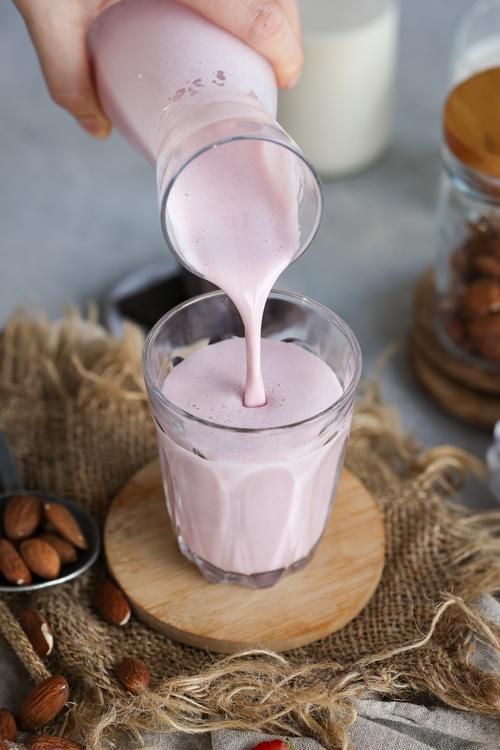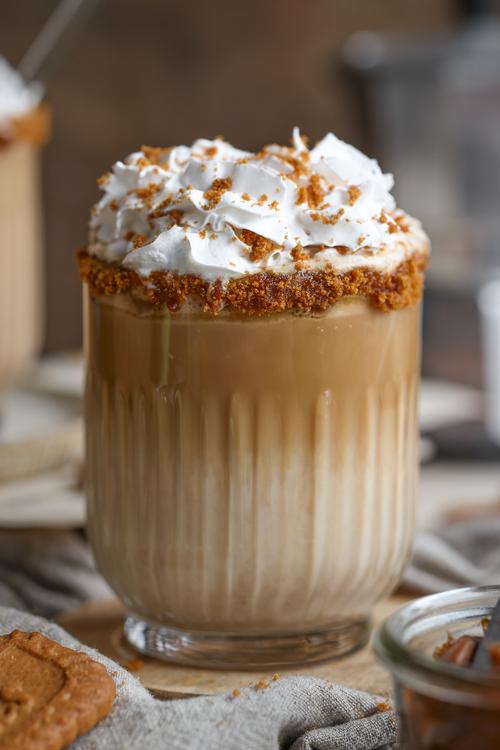
View on phone
Homemade Kombucha: Continuous Brew
6 days + 20 min
Drink
10 ingredients or less
No cook
Servings
(1 cup per serving)
Total
6 days + 20 minPrep
20 minFerment
6 daysFree from
Ingredients
Homemade kombucha
-
14 cups (3.4L)boiling water, ideally 185°F (85°C)
-
8bags organic, unflavoured green tea, black tea, or mix†
-
1SCOBY (Symbiotic Culture Of Bacteria & Yeast)
-
2 cups (480ml)starter tea, from previous batch of kombucha, or from unpasteurized, neutral-flavored, store-bought kombucha
Make your own
Directions
- Place the large glass container in a dark, undisturbed location at room temperature. Ideally, place the container about 10 inches (25 cm) off the floor to allow for ease of bottling. It will be hard to move the vessel when the tea has been added.
- If you use a container with a spigot (which makes bottling a lot easier), choose a container with either a plastic spigot or a high-quality stainless steel spigot (304 grade or higher)*.
- Make the sweetened tea by dividing the boiled water, sugar, and tea in a clean glass jars**.
- Stir to dissolve the sugar and allow it to steep until the tea has cooled to room temperature.
- When cooled, remove the tea bags (or strain out the loose leaf tea) and add the sweetened tea to the large glass container with the spigot.
- Add the starter tea to the large glass container as well. The starter tea plays a crucial role in acidifying the sweetened tea to a level that inhibits the growth of harmful bacteria.
- Then gently place the SCOBY on top of the liquid with clean hands.
- Cover the container with a clean cloth, paper towel, or coffee filter and secure it with a rubber band. Avoid using cheesecloth, as the small openings are large enough for fruit flies to enter.
- Ferment for 6 to 10 days***. The SCOBY may not always float at the top, and that's okay. A new "baby" SCOBY layer should start forming on the surface of the kombucha within a few days.
- After 6 days, give the brew a taste test. If it hits the spot, it's ready to bottle! For a sweeter beverage, ferment for a shorter time, for a tarter beverage, ferment for longer. The longer the tea is left to ferment, the less sweet and more acidic it becomes as the SCOBY continues to eat up all the sugar.
- Using clean glass bottles with plastic lids, gently open the spigot of the large container housing the brew and fill your bottles about ¾ full.
- Leave at least 2 cups (480 mL) worth of brew in the large container to serve as the "starter tea" for the next batch.
- If you'd like to flavour your kombucha, add a juice of your choice to the bottle, such as strawberry juice or apple and ginger juice, leaving about 1 inch (2 cm) of air at the top of the bottle for carbonation.
- Secure the lid and store the bottled kombucha at room temperature and out of direct sunlight for 24 - 48 hours, which will allow for carbonation. After this period, refrigerate to stop fermentation and carbonation.
- To make a new batch of kombucha, make the sweetened tea as outlined previously****. When cooled, add this to the large container with the SCOBY and starter tea. Cover and seal with a rubber band. Ferment for an additional 6 to 10 days. Enjoy!
Notes
- †Substitute every 4 bags of tea for 1 Tbsp of an organic, unflavored loose leaf black or green tea.
- * Since the acidity of kombucha can degrade metal, it's advised to use plastic to avoid the possibility of metal leaching into your beverage.
- ** To protect the plastic spigot from potential damage, it is advisable not to pour boiling water directly into the container with the spigot when preparing the sweetened tea.
- *** Check on the kombucha periodically to ensure the SCOBY looks healthy. Light brown spots are normal, but black spots are not.
- **** After each kombucha batch, a new "baby" SCOBY forms on top of the "mother" SCOBY, replicating itself. More SCOBY layers result in shorter fermentation time due to increased bacteria and yeast. To slow fermentation, remove older SCOBY layers and create a "SCOBY hotel" by storing them in a clean, covered glass jar with starter tea in the fridge, sealed with a plastic lid. It always helps to have a backup of SCOBYs in case something goes wrong.
Storage
- Store the bottled kombucha in the fridge for up to 1 month.
- Read our Kombucha Troubleshooting Guide for more insights, tips, and answers to common questions.
Let us know what you think
Nutrition info
Focusing on numbers can harm our relationship with food. Instead, our philosophy is to Nourish the Cells & the Soul. For specific nutrition needs due to a medical condition, consult a dietitian or physician. While we strive to provide accurate nutritional information, we cannot guarantee its accuracy. See our disclaimer for details.
Frequently asked questions
What is kombucha?
Kombucha is a refreshing, slightly fizzy drink with a touch of sweetness, made from sweetened tea that's fermented using a culture of bacteria and yeast, known as a SCOBY.
What is SCOBY?
SCOBY stands for symbiotic culture of bacteria and yeast, and it’s the key to making kombucha! It's a thick, jelly-like disc that helps ferment the tea by feeding on the sugar. It gives kombucha its probiotics and that signature fizz we love.
Is kombucha safe to make at home?
Yes, kombucha can absolutely be a delicious and safely brewed beverage! To keep things on the safe side, it’s best to avoid metal utensils, flavoured teas, cheesecloths, and, of course, ensure everything is clean before you start. These small precautions help prevent unwanted bacteria or toxins from contaminating your brew. If you notice dark black spots, it could be a sign of harmful bacteria or yeast growth. And if you see any mold, it’s time to start over. When in doubt, it’s always better to discard both the tea and SCOBY and begin fresh!
Does homemade kombucha have alcohol?
As the SCOBY feeds on the sugar, it naturally produces a tiny bit of alcohol - usually less than 1 or 2%.
Can I add flavour to homemade kombucha?
One of the best things about brewing kombucha at home is getting to play around with endless flavour combinations! You can add flavours during the second fermentation step, such as strawberry juice or apple and ginger juice, though it’s totally optional. For more inspiration, check out our Homemade Kombucha Tips & Troubleshooting article.
Why does my kombucha smell like vinegar or have strings?
At first, kombucha will smell neutral or even a bit sweet. As it ferments, it’ll start to smell more vinegary, but don’t worry - that’s totally normal. If you like your kombucha on the sweeter side, you can ferment it for a shorter time. Start taste-testing as early as 3 days in and bottle it once it reaches the sweetness you like. For a less sweet brew, let it ferment longer. The bacteria and yeast will keep eating up the sugar, making the kombucha more tart over time. You might also notice brown strings floating around or sticking to the SCOBY. These are normal yeast strands and are part of the fermentation process, so no need to remove them. They’re harmless, though sometimes the yeast particles can settle at the bottom and clog the spigot. If that happens, it’s just a sign the container might need a quick clean-up.
Why isn’t my homemade kombucha fizzy?
Your kombucha might not be carbonating for a few reasons. First, make sure there's at least 1 inch (2 cm) of space at the top of your bottles. This allows room for the gases to build up. Adding sweet fruit juices can also help, as they provide the microbes with sugar to munch on, which they then turn into carbonation. It's essential to use bottles with tightly sealed lids to keep the gas from escaping. Lastly, ensure you allow enough time for the second fermentation outside the fridge - about 24 to 48 hours should do the trick for proper carbonation!









































Leave a comment
Hello PUL!
I am kind of dreaming of having a continuous production of kombucha as I like doing things I often consume from scratch. I have been humbled by sourdough bread recently though and the cold temperature of autumn-winter months seems to be my main issue (yeast kind of sleep in while microbioms make the sourdough way too sour). As kombucha is also produced with yeast, I wonder whether the temperature plays a huge role for kombucha as well. I would be very happy about any piece of advice)
After 1 year of brewing, I am still using this recipe for the measurements:)
Hello! I've been enjoying playing around with this recipe, but I had a question -- I've been following the directions, but I can't seem to get my kombucha to carbonate! Do you have any ideas why this might be? Thanks so much!
Just bought a scoby and am so excited to try this recipe! I was wondering how important it is to get organic sugar specifically? I was able to find organic tea where I live, but organic sugar has been harder to come by. Could I use regular granulated sugar instead?
I’ve been using this recipe for over a year now! These are perfect base instructions to take care of the scoby and allow for experimentation with brewing time and tastes. Thank you!
I can’t wait to try it!
Amazing recipe. Really, love the clear step by step instructions.
Congratulations on the app!!!
I have been following you for years. You have come a long way and it has been a pleasure learning from you and watching you grow also 🤗
This is one of your recipes that is saving me money 😂 they are a bit overpriced.
Congratulations again It is going to help a lot of people. Wishing you and your partner a long healthy and prosperous journey .
Thanks ☺️
This was my introduction to your YouTube channel. An easy to follow recipe and one that has kept me happy for months.